Did you know...?
Answers to frequently asked questions and some interesting facts about Skiareál Špindlerův Mlýn – all in one place.
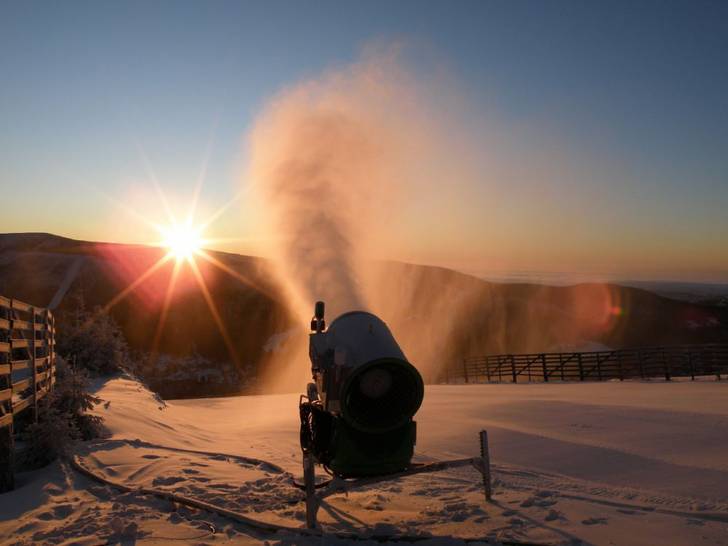
Why isn’t artificial snow making in operation throughout the entire resort at the same time?
Did you know that there are strict rules governing the making of artificial snow? The most important of these concerns the flow of water in our streams and rivers. Each year at the start of winter, Skiareál Špindlerův Mlýn commences the gradual production of snow on all its slopes. We prioritise our slopes according to the demands of our visitors. Most of them ski on the blue and red slopes, so these are those slopes we prepare before, for example, the black slopes, funtracks and other Skiareál facilities.
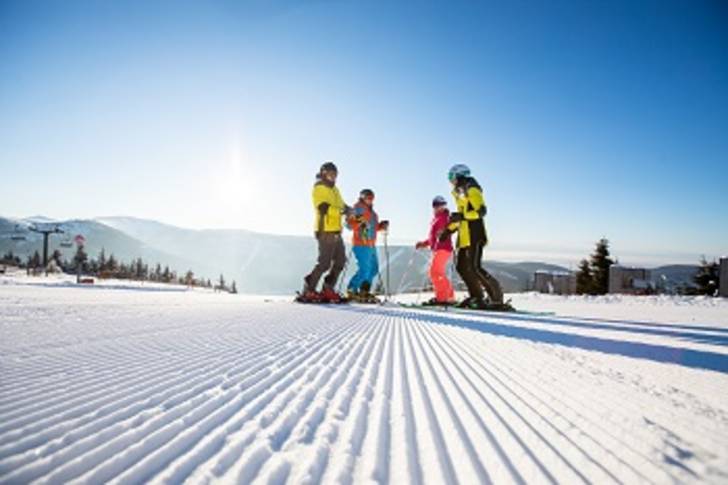
Why are some slopes not open when they have snow on them?
It’s not just snow that is necessary to get slopes ready for everyday use – the slopes must also be groomed by our snowcats. In order for the slopes to cope with the hundreds of people who ski on them daily, we use snowcats to groom the slopes. Each snowcat weighs more than ten tons and this heavy load compacts the fresh snow. If a snowcat attempted to groom a slope with insufficient snow, it would pull out clay and stones from the subsoil and these so-called "floating stones" would remain in the snow throughout the winter season. As soon as there is sufficient snow on any slope, a snowcat, supported by the latest SNOWsat technology, is dispatched to create a permanent snow base and groom the slope. The slope is then opened for public use.
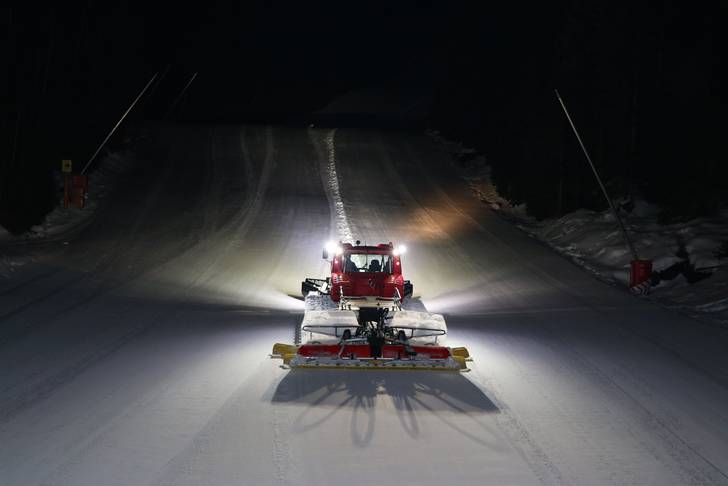
Why aren’t the slopes groomed every day in both evening and morning?
The preparation of the slopes for the next day gets underway as soon as the chairlifts stop working in the afternoon. After this, a lot depends on the frost, which has several hours to work on the surface (the so-called corduroy) created by the snowcat’s finisher. That is why the snowcats are sent out each day once the chairlifts close at 16:30. After grooming has finished, if less than 10 centimetres of snow falls overnight then the snowcats do not go out in the morning because they would disrupt the finished and frozen corduroy, and the slope would quickly be degraded by the skiers using it. However, if more than 10 centimetres of fresh snow falls during the night, the snowcats go out in the morning to "sweep" the fresh layer of snow and smooth it into the integral surface. Skiers find it more comfortable and safer to ski on a smooth surface.
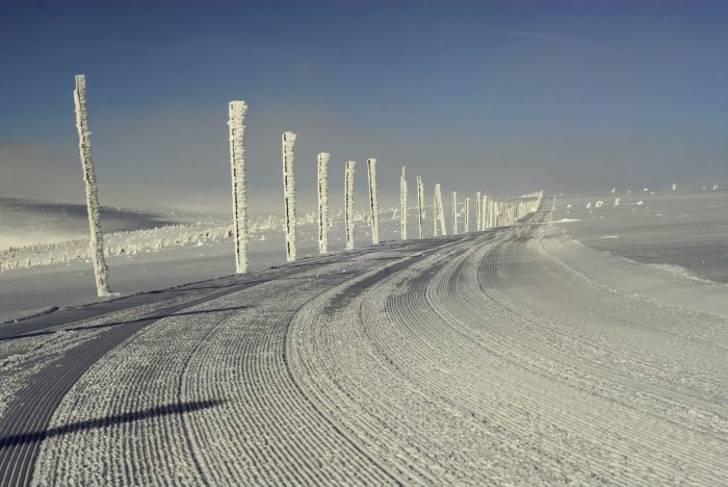
Cross-country skiing trails in Špindlerův Mlýn
Skiareál Špindlerův Mlýn operates some 90km of cross-country trails annually, and these are prepared daily during the winter season. Cross-country skiing is free for the public and cross-country skiers can enjoy perfectly prepared tracks on the Krkonoše ridges. From the start of winter season 2018/19, a charge was introduced to park at the car park at the Horní Mísečky chairlift, which is frequently used by cross-country skiers. However, there is no need to panic because there is still a large car park at Dolní Mísečky which operates free of charge and from where a free ski bus runs to Horní Mísečky and the cross-country trails. Parking at Horní Mísečky is FREE for holders of a registered GOPASS card with a valid product.
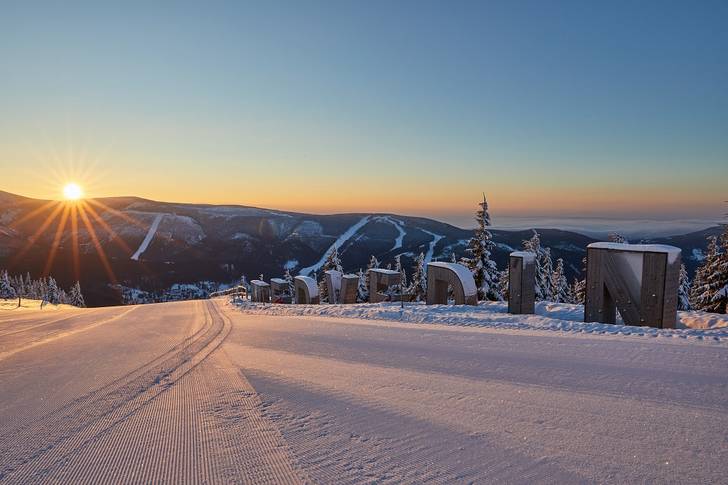
Why don’t we want people to use the closed slopes?
Skiareál Špindlerův Mlýn’s slopes stay open to the public until 16:30 but are then closed for the snowcats to do their work. This takes several hours and time must then be granted for the subsequent solidification of the groomed snow surface. Any disruption to the groomed surface during this time greatly negates the work of the snowcats, and the marks created can affect skiers who expect a 100% perfect surface finish the following morning. Apart from consideration for the early skiers and respect for the work of the snowcats, the most important reason for staying off the slopes out of hours is for your own personal safety. When working on snow-covered slopes, snowcats can use steel cables of up to 1,500 metres in length with a drag up to 18 tons. Such cables enable the snowcats to prepare even the most difficult terrain. The cables are thin and cut into the snow at the edges, and aren’t always to see at first glance. They are a deadly danger to skiers on downhill slopes.
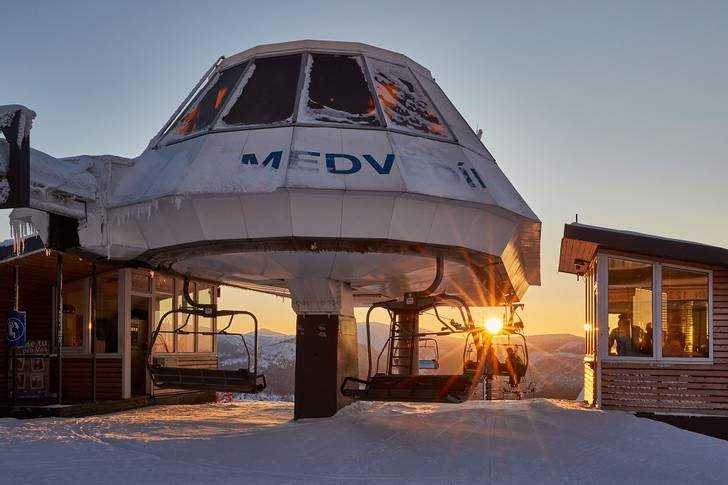
What causes the freezing of the Medvědín chairlift cable?
The freezing of the Medvědín chairlift cable occurs at a specific difference in air temperature – specifically when the temperature at the bottom station is above 0°C while at the upper station it is between -2°C to -4°C. When this occurs, the temperature difference and high air humidity typically caused by dense cloudiness combine to help form an ice elastic film that sticks to the cable and means it cannot pass through the roller and cable discs. The cable becomes extremely slippery and does not have sufficient friction on the friction wheels which drive the seats through the stations – the seats cannot pass through the stations and the chairlift comes to a halt. When this happens, is necessary to garage the seats and use wooden sticks and scrapers to remove the ice. Once the cable is clear of ice, operations recommence.
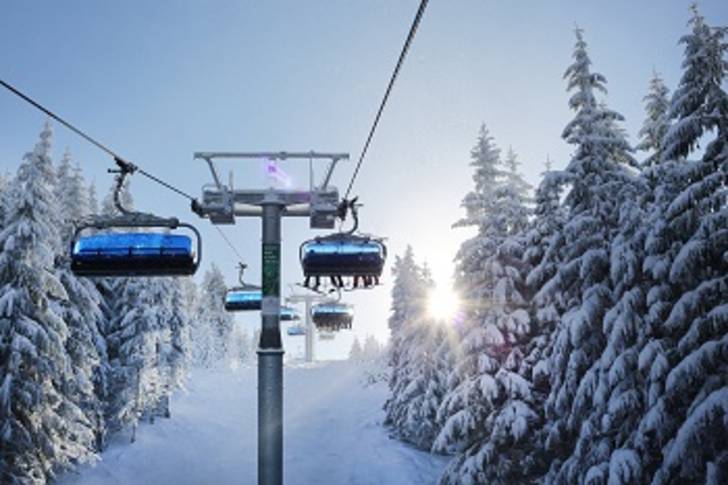
How does wind cause a problem for the innogy line at Sváty Petr?
The six-seater chairlift has a bubble cover to provide greater passenger comfort. When the wind blows in the same direction as the chairlift and strikes very strongly at the back of the seats at the upper station, it can cause difficulties for the bubble’s opening mechanism. In certain circumstances, the bubble may not open in sufficient time at the upper station and there is the possibility of a collision of seats. The chairlift is equipped with three anemometers along its cables. The permissible wind speed is 18m/s (65km/h) – at this wind speed it is possible to operate at full speed. The critical wind speed is 20m/s (72km/h) and at this wind speed the chairlift must operate at a reduced speed. When the wind is stronger than this, the chairlift cannot operate. We must also observe the trees that line the chairlift because if they are overloaded with frost or snow then even at lower wind speeds they can bend or snap onto the cable.